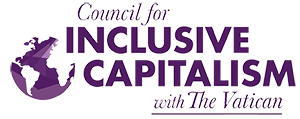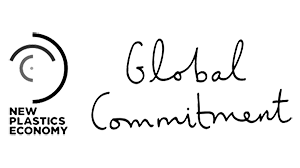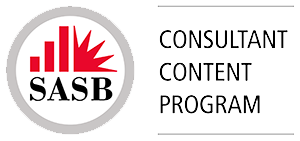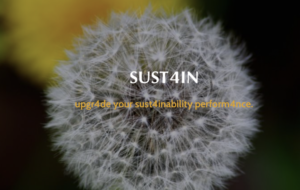Sustainable Development Goals: the first one thousand days and the road ahead. A business perspective

It is one thousand days since the Sustainable Development Goals were adopted by all nations. What happened since then and what next for business? asks Marcio Viegas, founder of SUST4IN.
Madrid, 21 June 2018. The weather was mild in New York on that Friday, 25 September 2015. But the atmosphere was electric as the Sustainable Development Goals (SDGs) were about to be adopted by more than 150 heads of state, including Pope Francis, Barack Obama, Xi Jinping and Narendra Modi, meeting at the UN.
After a quick vote, the new and ambitious Agenda 2030 was adopted, supported also by business leaders such as Bill Gates and Paul Polman, besides Mark Zuckerberg.
At SUST4IN we were excited as we had been promoting the SDGs since 2014 when we bet that the goals would be not just adopted by all countries, but that business should start using them.
In September 2015, over the 17 days ahead of the big meeting, we wrote an epic 17-articles series, one for each SDG and for each day, called “Business and the SDGs”. We closed that historic day by hosting a celebration, “the sustainable (net)working”, on a (recycled) old ship on the Hudson River.
2015 was also historic as the Paris Agreement on Climate Change was similarly adopted later in December. Not to mention the Addis Ababa Action Agenda of the Third International Conference on Financing for Development, adopted in August.
It was not all breezy though: we later learned that 2015 had actually been the hottest year ever! The good news was that the world, including many leading companies, were warming up to implement the SDGs at national, local and business levels, with (mostly) solid commitments.
What happened in the last one thousand days?
Contrary to some pessimists, the SDGs were embraced, well beyond the UN in New York, by many leaders in all countries and business sectors, not only because the associated responsibilities and risks, but equally because of the enormous opportunities involved.
In 2016 the Business and Sustainable Development Commission published its seminal Better Business, Better World report, urging business to seriously invest on the SDGs with a strong business case: the “SDGs gift” was estimated in at least $12.3 trillion. Per year!
As the days and months passed, the momentum kept growing: We now see that energy everywhere, from investors asking more “SDGs questions”, directly and through the updated CDP or the RobecoSAM Dow Jones Sustainability Index questionnaires, to more responsible investments, to companies using the SDGs to report and more recently to some companies already making a difference.
Awareness is slowly growing. People now call the SDGs simply by its acronym and without the “UN”! The likes of Paul Polman know many of them, including the targets, by heart.
More recently Pope Francis evangelized oil executives and investors on climate action, energy transition and other SDGs, saying “We know that the challenges facing us are interconnected. If we are to eliminate poverty and hunger, as called for by the Sustainable Development Goals, the more than one billion people without electricity today need to gain access to it. But that energy should also be clean, by a reduction in the systematic use of fossil fuels.”
Interestingly Google Trends also confirms a (slightly) positive trend around the Sustainable Development Goals (see it on the right).
17 goals and 169 targets are too much for business. Consequently, another clear trend among businesses, even large corporations, is to focus on a few key, or “material” SDGs, where they can make a difference, instead of trying to “save the world” and dispersing action among the 17 SDGs.
How companies and business associations are selecting the material SDGs can be argued nevertheless. Some companies and associations are accused of “cherry picking” or focusing only on “comfort” SDGs.
One way to avoid such criticism and indeed big mistake is to combine the SDG Compass, a tool developed by the WBCSD, GRI and Global Compact, with an honest and transparent materiality assessment methodology and reporting, using for instance the GRI Standards.
What about the real action? A foggy start, the big gap and “SDGs Washing”.
Here the picture is rather misty. Some commitments have melted with the even hotter 2016 year, but many however are beginning to be actually implemented. In any case and that is the number one challenge for business is the fact there is still an important gap between words, action and scale, even among very committed companies (more on this later).
Many countries are still in the shadow and have not devised a local Agenda 2030, a plan or something or taken the SDGs at the highest level. The Nordics, Germany, Mexico and Colombia are bright stars. As well as the relentless impetus by leaders such as Emmanuel Macron, Angela Merkel or Shinzo Abe need to be spread among other countries, regions and cities.
Public awareness however is a challenge. Similarly many businesses, namely SMEs, have yet to understand the importance, responsibilities, risks and opportunities around the SDGs. Sounds like hot air, but yes, more businesses need to grasp the SDGs, make conscious commitments and eventually implement and scale them. Big companies can push their value chains, but that is not happening yet.
In stormy Japan, for example, an OECD research has shown that while SDGs’ awareness reaches 84% of corporate social responsibility staff, the figures for top management and middle management are only 28% and 4-5% respectively.
Even in quieter Europe, the gap between CEOs, plus sustainability managers, and the rest of the company is concerning. CSR Europe reported last year that while 53% of top management are at least aware of the SDGs, only 11% of middle managers are.
Figure 2 (on the right): SDGs: An opportunity for more internal engagement. “European Business Leader Perceptions of the Sustainable Development Goals”. CSR/GlobeScan, May 2017.
More recently and CSR Europe confirmed that the skies among European business associations are not much brighter. While 72% reported to “embed” sustainability and the SDGs at strategic level, only 35% had actually started implementing projects.
Figure 3 (on the right): SDGs Maturity analysis of sector organization. “Collaboration for Impact Maturity and integration of sustainability in European sector associations”, by CSR Europe/PwC, Jun 2018.
Then on a planetary scale, take the World Business Council for Sustainable Development (WBCSD), an association of 200 large multinationals, committed to sustainable development. Amazingly the gap exists even among the galactic WBCSD members: while 79% acknowledge the SDGs in some way and 45% of reports have taken it a step further by aligning their sustainability strategy to goal-level SDG criteria, only 6% of reports have aligned their strategy and targets to specific target-level SDG criteria and measured their contributions to key SDGs.
Interestingly the OECD confirms that gap too and list more challenges: According to the OECD, evidence shows that SDG awareness – among the general public and employees – is increasing, but significant hurdles remain.
The other challenges for business listed by the OECD are:
- The dilemma of reconciling profitability, risk management and sustainability
- Challenge of seeing the SDGs as a strategic part of core business
- Importance of including sustainability in management education
- Lack of co-ordination across supply chains
- Addressing SMEs’ engagement with SDGs through multinational corporations
- Internal and external accountability – measuring progress against the SDGs
But, in case you feel gloomy, the opportunities are also clear, says the OECD:
- Companies that are more sustainable are more competitive
- Access to new markets and opportunities
- Reducing inequalities can be addressed by blockchain technology.
- Greenhouse emissions can be mitigated by exploring innovating and responsible supply for food sources.
- Sustainable construction techniques are increasingly contributing to reduce the sector’s carbon footprint.
- Sustainability leads to technological innovation
- Sustainable companies attract talent
Last but not least, the OECD is quite optimistic about the millennials. The Paris-based organization believes that “a large majority of global customers, especially youth, are willing to pay a premium for products and services offered by sustainable businesses: up to 66%, and 73% in the case of global millennials.”
To be honest and as it happens any deep change process or with novelty, the implementation gaps are not a total surprise. The fact that countries and companies are not really acting, may also be comforting as it creates less “peer pressure”, but again the SDGs are an enormous opportunity to be seized, the first step is to understand the “change management” challenge and face it.
The other threatening clouds is what we call “SDG Washing”. The grand words of the Agenda 2030 and even the SDGs make wonderful solemn commitments. Then the colourful SDGs logos make nice annual reports, websites and pamphlets. But without prompt action on what is really material, followed by numbers, preferably verified and aligned with the SDGs, such pledges and nice visuals can dent the reputation of the companies themselves and, worse, of the SDGs in general.
On the sunny side, investors are now probably the main driver behind the SDGs. Definitely for business. The ethical investment boom, together with the pressure and initiatives from mainstream investors and banks such as BlackRock, Aviva, HSBC or BBVA, are pushing companies to change, using the SDGs as a road map.
Last but not least, transparency is also key. In that sense the advent of the recommendations by the Task-force on Climate and Financial Disclosures (TCFD) have been an enormous step towards transparency on carbon emissions by the financial sector and others.
What are the initial achievements? What can we learn from four high level assessments.
It is still early to see much actual results and hard to link them to the SDGs. Quite frankly some of the goals are right now being achieved regardless of the SDGs, as it happened with the older Millennium Development Goals, between 2001 and 2015, but this is what we can learn from some initial assessments:
The official “2018 Progress towards the Sustainable Development Goals”, to be presented at the UN by its Secretary-General in July, indicates first that the loads of data is still missing to have a proper assessment. Then, where data exists, the report shows some progress in goals such as SDG1 (No poverty), SDG3 (Health), SDG5 (Gender Equality), SDG7 (Energy) and SDG8 (Economic Growth and Jobs) but not much on SDG2 (End Hunger), SDG4 (Education) or SDG12 (Sustainable Consumption and Production), and clearly on SDG13 (Climate Action).
Some alarms raised in the UN Secretary General assessment:
- SDG2 (End Hunger): “After a prolonged decline, world hunger appears to be on the rise again. Conflict, drought and disasters linked to climate change are among the key factors causing the reversal in the long-term progress in fighting global hunger, making the prospect of ending hunger and malnutrition by 2030 more difficult.”
- SDG12 (Sustainable Consumption and Production): “Decoupling economic growth from resource use has been challenging. Addressing this will require policies creating conducive environments, social and physical infrastructures and markets, as well as a profound transformation of business practices along global value chains.”.
- SDG13 (Climate Action): “The year 2017 was one of the three warmest years on record and was 1.1 degree Celsius above pre-historical levels. WMO analysis shows that the 2013–2017 five-year average global temperature is the highest on record. The world also continues to experience rising sea levels, the mostly costly North Atlantic Hurricane season on record and increasing concentrations of greenhouse gases, necessitating urgent and accelerated action by countries as they implement their commitments for the Paris Agreement on Climate Change.”
At national level the Scandinavians and other rich European countries are predictably delivering the best results up to now. This is the main conclusion of an independent evaluation, called SDG Index, by the non-profit organization Bertelsmann Stiftung and the UN Sustainable Development Solutions Network. But even in the best ranked country, Sweden, the “SDG Dashboard” shows a mix of results.
Figure 4 (on the right): SDG Dashboard for Sweden. 2017 SDG Index and Dashboards. www.sdgindex.org.
DNV GL is even more pessimist. A forecast model from its “Spaceship Earth” model has assessed the likelihood of the world achieving the SDGs by 2030. According to the report, none of the 17 SDGs will be achieved in all regions, and four areas are of special concern: inequality (SDG10), consumption and production (SDG12), climate (SDG13), and oceans (SDG14).
However a more optimist report by the OECD shows that their country-members are currently closest to reaching targets related to water (SDG6), climate (SDG13), biodiversity (SDG15), cities (SDG11), poverty (SDG1) and oceans (SDG14). They have the greatest distance to travel in relation to gender equality (SDG5), education (SDG4), the economy and jobs (SDG8), and institutions (SDG16).
Figure 5 (on the right): OECD average results by Goal. The y-axis indicates the distance from reaching the target in standardised units. 0 indicates that the level for 2030 has already been attained, and the axis starts at 3 as most OECD countries have already attained this level. “Measuring Distance to the SDG Targets An assessment of where OECD countries stand.”. OECD, Jun. 2017.
Overall, we clearly need more ambition and urgency, namely with themes such as Sustainable Consumption and Production (SDG12), Climate Change (SDG13) and Inequalities (SDG10).
What next? New regulations, better strategy, more impact investing and our homework.
The ultimate responsibility in achieving the SDGs rest on national governments – whose heads have signed the adoption of the SDGs. In that sense we expect to see more and more action, including new regulations banning plastics or diesel cars, better enforcement of existing environmental, social and governance regulations and the end of subsidies to fossil fuels for instance, despite its social challenges. The 2018 edition of the OECD’s Policy Coherence for Sustainable Development (PCSD) provides some directions for such new regulations.
The SDGs are strategic for business. The first step, if the commitment did not come top down or if it is not genuine, is to convince the CEO that the SDGs are good business. Here the WBCSD’s CEO Guide to the SDGs, now in seven languages, can be useful. The next step, or in parallel, is to properly understand and assess each SDG – beyond its title, targets and indicators and find the risks, responsibilities and opportunities involved in order to set or review a sustainable business strategy. If it has been done in a rush, do it again! Then it is a classical – and painstaking – project management process, with an extra dose of consultations, honesty and transparency. Again, the SDG Compass and the new GRI Standards are great tools, even if not perfect.
At business level the forthcoming new regulations mentioned above are also strategic. A ban can kill a business and propel another. Business normally prefer self-regulation, but some business leaders actually pushing for more regulation. First to better predict investments, second to level the playing field and third because we simply do not have the time to convince ourselves as consumers to change behaviour.
Some issues are more urgent than others. Awareness campaigns are fine, the new generations seem to be more responsible, but on issues such as climate change, modern slavery and ocean pollution there is urgency and the tendency is to enforce “modern” legislation to ban bad behaviour or materials and to tax pollutants such as the carbon content of fuels.
Conclusions:
In addition to taking the SDGs at strategic level and closely following such new regulations, businesses need do its homework from legal compliance to adopting good and best practices internally and across all levels.
Transforming speeches and slide presentations into awareness campaigns, training, procedures, spreadsheets, new routines, answer to long questionnaires and detailed reports is not glamorous, but this is where the SDGs will happen at factories, shops, power plants, construction works, supermarkets, mines, airplanes, banks and even at some bars!
Investors will remain the most important driver behind the SDGs. As McKinsey wrote recently, “sustainable investing is becoming the new normal”, with several European funds exploring ways to link their sustainable investing strategies to the SDGs.
Partnerships (SDG17) are fundamental, but one key element for successful long-term partnerships is trust, which is only achieved if the company – including middle managers, as identified by CSR Europe – can complete its assignments and demonstrate its own results.

We are a network of expert professionals on sustainability.
SUST4IN apoya:








